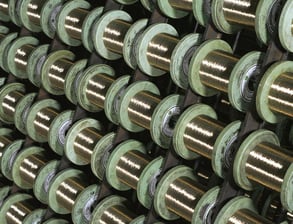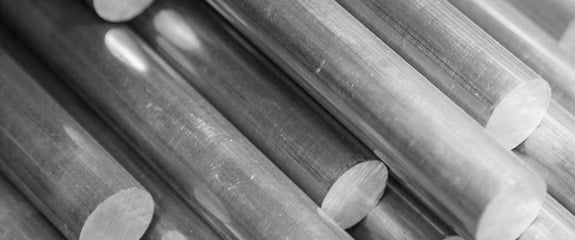Understanding Architectural Mesh: Wire Drawing
Architectural Mesh - Exterior | Architectural Mesh - Interior
If you have ever come across architectural wire mesh, then you know architects can apply its unique characteristics to deliver an atmosphere that is industrious yet modern. Of the many beneficial qualities it offers, architectural mesh's ability to be customized makes it such an attractive design material.
Now, the wire diameter featured throughout an architectural mesh panel is a critical piece of the puzzle. To achieve an accurate wire diameter, the supplier of your architectural mesh must have a reliable wire drawing process.
Having said that, what does the architectural mesh wire drawing process entail?
For over 20 years, W.S. Tyler has supplied mesmerizing architectural mesh systems that helped make the vision of the architect a reality. A key step to doing so is helping every architect, contractor, and everyone in between what architectural mesh is and how it's made.
For this reason, we wrote the following article highlighting the wire drawing process used when fabricating architectural wire mesh. You will learn:
- What wire drawing means
- What the wire drawing process looks like
- What makes the architectural mesh wire drawing process unique
- The importance of having a reliable drawing process in place
What Does It Mean To Draw Architectural Wire Mesh?
Drawing is a technique used to pull through a series of dies until the diameter of the wire is reduced to a specific size. The wire must typically travel through multiple dies to not damage the wire during the process.
That said, while the wire is being pulled and the diameter reduced, the volume of the wire remains the same, and its length increases.
How Are Stainless Steel Wires Drawn?
 The wires used to weave architectural wire mesh panels initially arrive in the form of a spool of wires with a diameter of 5.5 mm (.216"). Once the wires are ready to be drawn, they are first treated and cleaned to remove unwanted scale that may be resting on the surface of the wire.
The wires used to weave architectural wire mesh panels initially arrive in the form of a spool of wires with a diameter of 5.5 mm (.216"). Once the wires are ready to be drawn, they are first treated and cleaned to remove unwanted scale that may be resting on the surface of the wire.
A spool of wire is then shrunk and fitted to the first die in the drawing process. The single wire is then pulled through the first die, elongating the granular structure of the wire.
The wire is pulled through multiple dies that progressively get smaller to achieve the specified wire diameter.
Now, it should be noted that, if there is an area reduction greater than 50%, the wire will most likely need to be heat treated via an annealing process. This will increase the wire's flexibility will increase while its hardness decreases.
Once annealed, the wire can be pulled through the smaller dies. After reaching the desired wire diameter, the wire can be wound onto a spool and fed through a weaving loom.
How Is the Architectural Wire Mesh Wire Drawing Process Unique?
The critical element of the architectural mesh drawing process that makes it stand out is that the wires are drawn through a diamond die. The wires are also pulled through the dies at a much slower pace.
These two elements work in conjunction to make for a smoother drawing process. This helps create the smooth, lustrous finish architectural mesh is known for.
At the same, it works to eliminate the brushed, granular finish of industrial wire mesh.
What Impact Does Wire Drawing Have On Architectural Mesh?
Throughout the article, we have mentioned that the wire drawing process is in complete control of the diameter of the individual wires that make up an architectural mesh panel. The diameter of your panel's wires plays a crucial role in its durability.
This is particularly beneficial when using architectural mesh as a protective barrier, such as a parking garage facade that protects patrons and their cars from potentially dangerous weather conditions.
Additionally, by controlling the wire diameter, you can control the number of wires in the panel. In turn, you can create dynamic effects that are unique to your project and interact with the region's climate.
Discover the Weave Pattern That Will Leave Patrons in Awe
When fabricating architectural mesh, wire drawing refers to the method of pulling a stainless steel wire through a series of dies to reduce the diameter of the wire. An accurate wire diameter helps create a stunning design material with the durability needed to withstand the elements.
But once the wire is drawn to the desired diameter, it's time to weave it into a specific weave pattern. To weave vision into reality, you must understand and identify a weave pattern that makes sense for your design process.
W.S. Tyler has helped architects make the most of what architectural mesh has to offer for over 20 years and is here to help ensure you gain a sense of pride in your final design.
To gain a better idea of what weave patterns you should consider, read the following article:
About Ronnie Brown
Ronnie is the Content Writer for W.S. Tyler and has four years of experience as a professional writer. He strives to expand his knowledge on all things particle analysis and woven wire mesh to leverage his exceptional writing and graphic design skills, creating a one-of-a-kind experience for customers.




